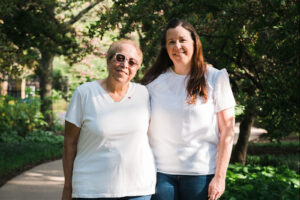A new cancer diagnosis comes with a trove of worries—most essentially, which foods should be avoided and which should be eaten in abundance. The American Cancer Society recommends a balanced diet with plenty of protein, fruits, vegetables, and whole grains for people currently undergoing treatment for cancer. Good nutrition is especially important, as cachexia (or wasting syndrome, involving extreme muscle and weight loss) can affect as many as 80 percent of people with advanced cancer, according to a December 2015 article in Nature. We’ve listed some popular diets that promote healing, maintain energy, and encourage overall wellness. Certain foods can interact with medication, so always consult with your health care provider before changing your diet.
ALKALINE
Many are told cancer thrives in an acidic environment. Diets that are too high in acid-producing foods can also cause health issues like kidney stones and bone and muscle deterioration. The alkaline diet aims to reduce acidity by limiting consumption of alcohol, sugar, refined carbohydrates, and animal fats, while increasing consumption of water. The alkaline diet features plenty of fruits, vegetables, and whole grains.
Breakfast:
quinoa and chia seed porridge made with hemp milk
Lunch:
avocado and pomegranate salad with apple cider vinegar dressing
Dinner:
kale pesto pasta made with zucchini noodles
PALEO
The paleolithic diet features foods eaten by our ancient ancestors. Proponents of the paleo diet say chronic diseases like cancer arose from eating foods produced after the agricultural revolution. Those following a paleo diet limit processed foods, sugar, grains, legumes, and dairy (the rationale being that our hunter-gatherer ancestors did not produce sugar, harvest grains or legumes, or milk cows). However, eliminating food groups may contribute to overeating.
Breakfast:
egg and turkey sausage casserole
Lunch:
grilled chicken salad with cranberries and walnuts
Dinner:
beef and vegetable stew
KETO
This diet follows a high-fat, low-carb meal plan—essentially a rebranding of the controversial Atkins Diet popular during the late-1990s. These dieters dropped weight fast, but with increased consumption of fatty meats and dairy, claims about the risks to the heart were not unfounded. The keto diet, however, emphasizes heart-healthy fats from a variety of sources to encourage the body to enter a state known as ketosis, where the body burns stored fat instead of glucose.
Breakfast:
scrambled eggs with mushrooms and spinach
Lunch:
no-noodle chicken and vegetable soup
Dinner:
pork chops with green beans and garlic
VEGAN
To many, veganism is not just a diet but a way of life. Strict vegans abstain from eating all animal products, but also incorporate the “diet” into other parts of life, such as not using makeup that has been tested on animals. It is difficult, but not impossible, to reach daily values of necessary nutrients—nuts, for example, are a good source of protein, but contain much less per gram when compared to meat. When first incorporating veganism into your lifestyle, track nutrients to make sure you are reaching daily values.
Breakfast:
mixed fruit smoothie with almond milk
Lunch:
avocado toast
Dinner:
hummus and vegetable wrap
LOW-FODMAP
he acronym FODMAP refers to five different types of sugars. Your doctor might recommend you try this diet if you experience digestive issues caused by malabsorption of these sugars. There are three phases to a low-FODMAP diet—1) Eliminate: Cut these foods from your diet; this phase will last three to eight weeks. 2) Reintroduce: Slowly add the foods, one at a time, back into your diet—this will help you determine which foods cause you trouble. 3) Liberation: Reintroduce tolerable high-FODMAP foods back into your diet.
Breakfast:
gluten-free blueberry pancakes
Lunch:
vegetable and lentil soup
Dinner:
baked chicken with quinoa and vegetables
MACROBIOTIC
Meaning “long life,” the macrobiotic diet emphasizes balance in the body. Drawing on the Taoist Chinese concepts of “yin” and “yang,” foods are classified and ingested in an equal balance. Sour foods are “yin,” and sweet foods are “yang”—both categories must be consumed in balance. High in fiber and free of red or processed meat, this diet avoids foods containing toxins and promotes the consumption of whole grains, fruits and vegetables, and soups made with vegetables, seaweed, legumes, and fermented soy.
Breakfast:
steel cut oats with fruit
Lunch:
miso soup and wholegrain crackers
Dinner:
polenta with shrimp and vegetables







